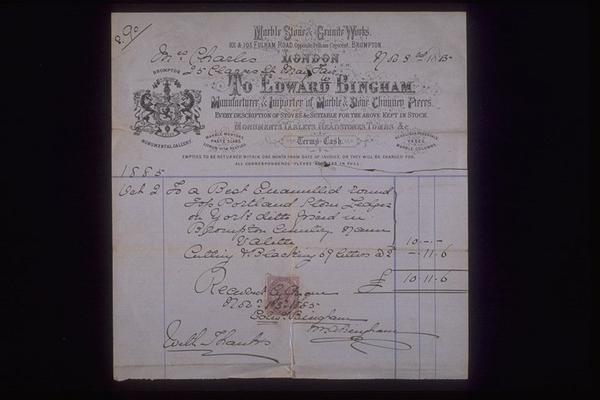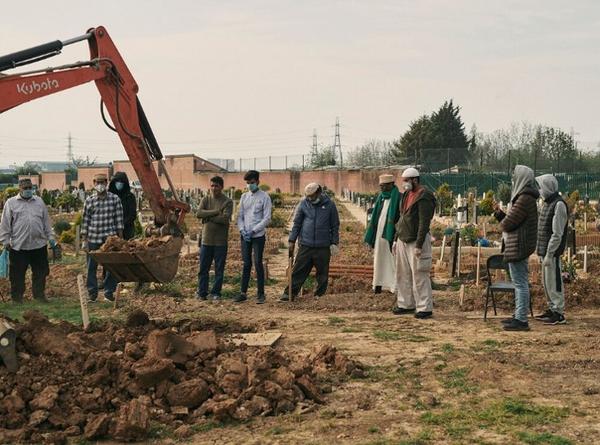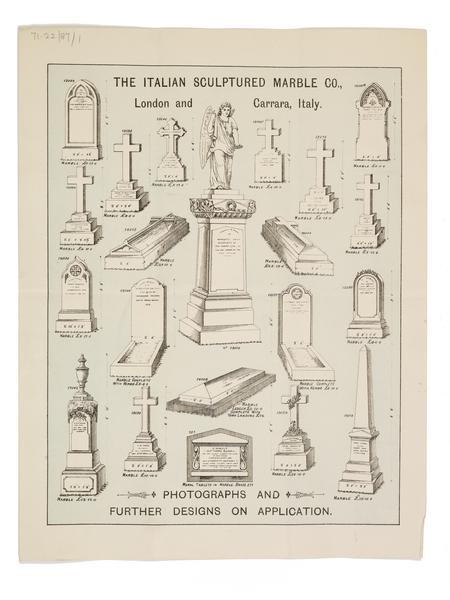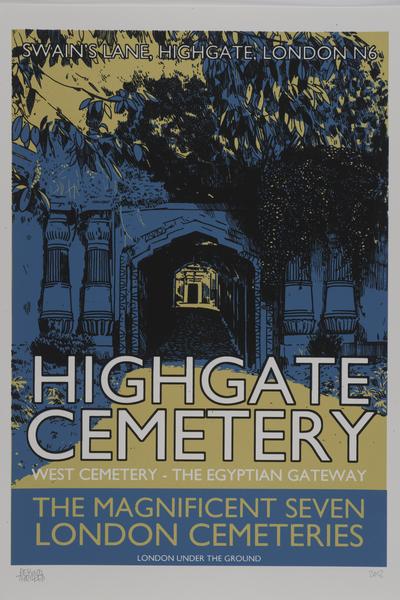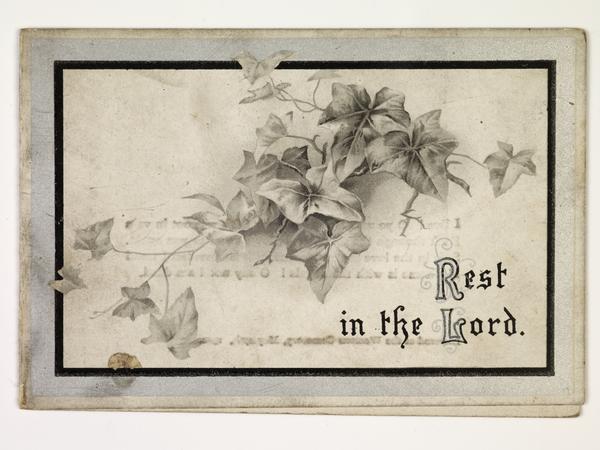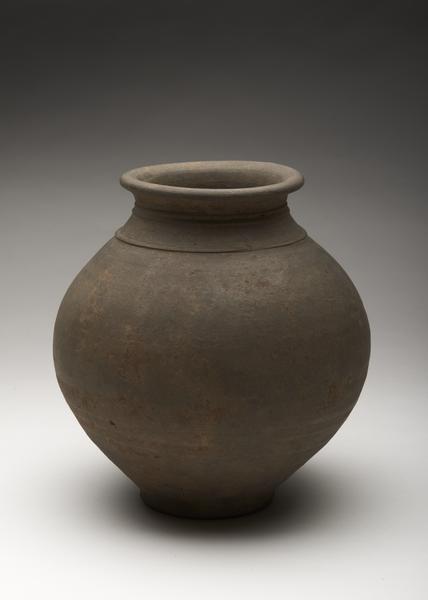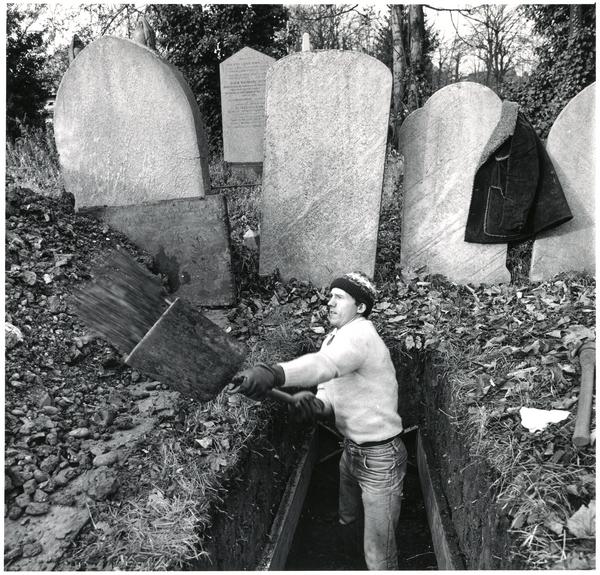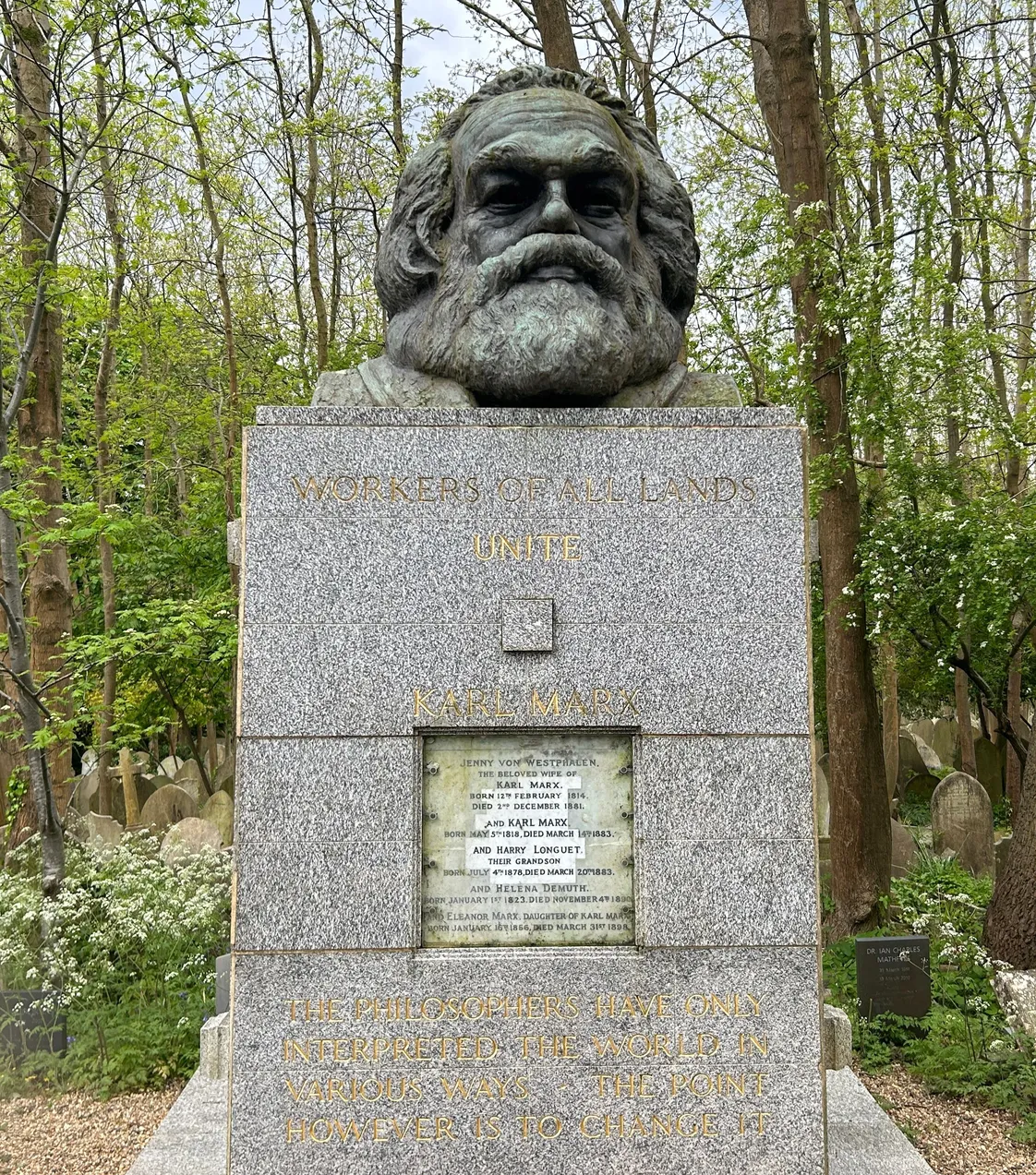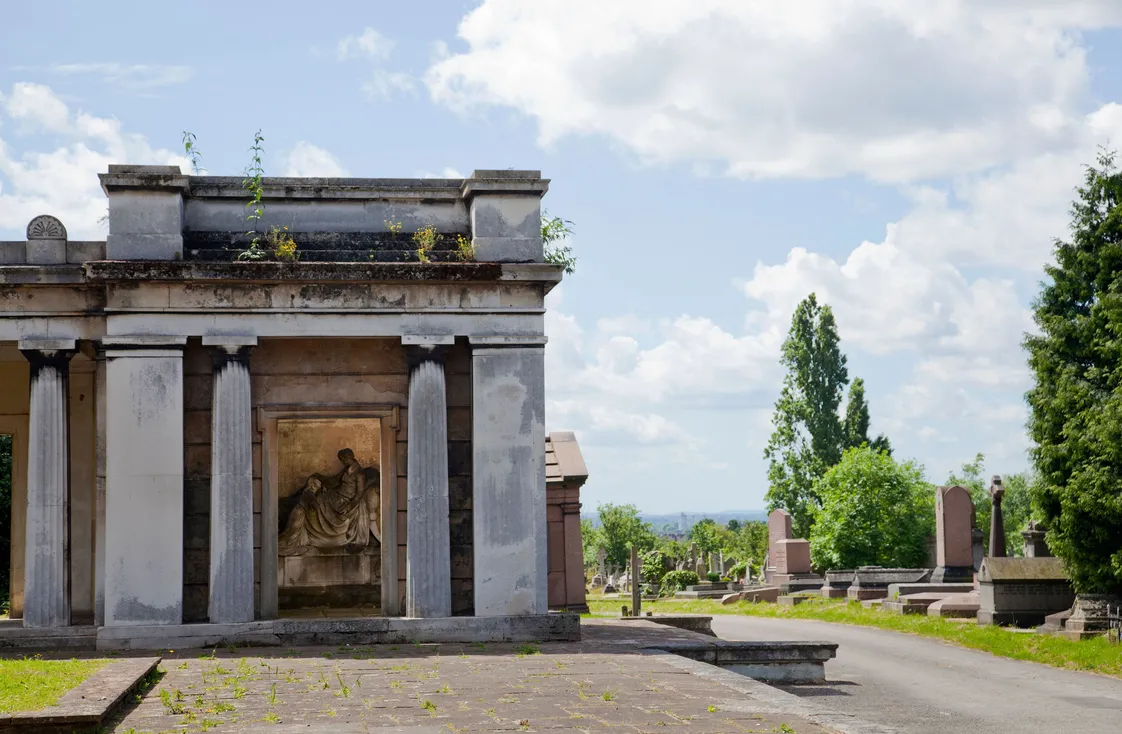Brompton Cemetery
Brompton Cemetery sits next to Chelsea FC’s home ground, Stamford Bridge, in west London. One of London’s Magnificent Seven cemeteries, it’s where over 200,000 people have been laid to rest.
Kensington & Chelsea
1840

Brompton Cemetery, one of London's Magnificent Seven
A west London resting place and wildlife haven
The Magnificent Seven is the name given to seven commercially run cemeteries built in London from 1832 to 1841. The idea was to provide much needed burial space for London. Before then, most burials took place in small, local churchyards.
Brompton opened in 1840. It was founded by Stephen Geary, who’d also started Highgate and Nunhead cemeteries.
On this symmetrical, rectangular site, Gothic memorials blend into the avenues of lime trees and wildflowers. Many noted artists, scientists, activists, adventurers and sportspeople have been buried here.
The original design of Brompton Cemetery
The designer Benjamin Baud originally came up with the idea of an “open-air cathedral layout” for the cemetery. It featured a grand avenue leading to the stone arched colonnades of the Great Circle.
Three chapels were planned: one for Anglicans, one for Roman Catholics and one for dissenters. Underneath the Great Circle would be catacombs, underground chambers for coffins.
But construction proved expensive and the company behind Brompton was forced to scale back its plans.
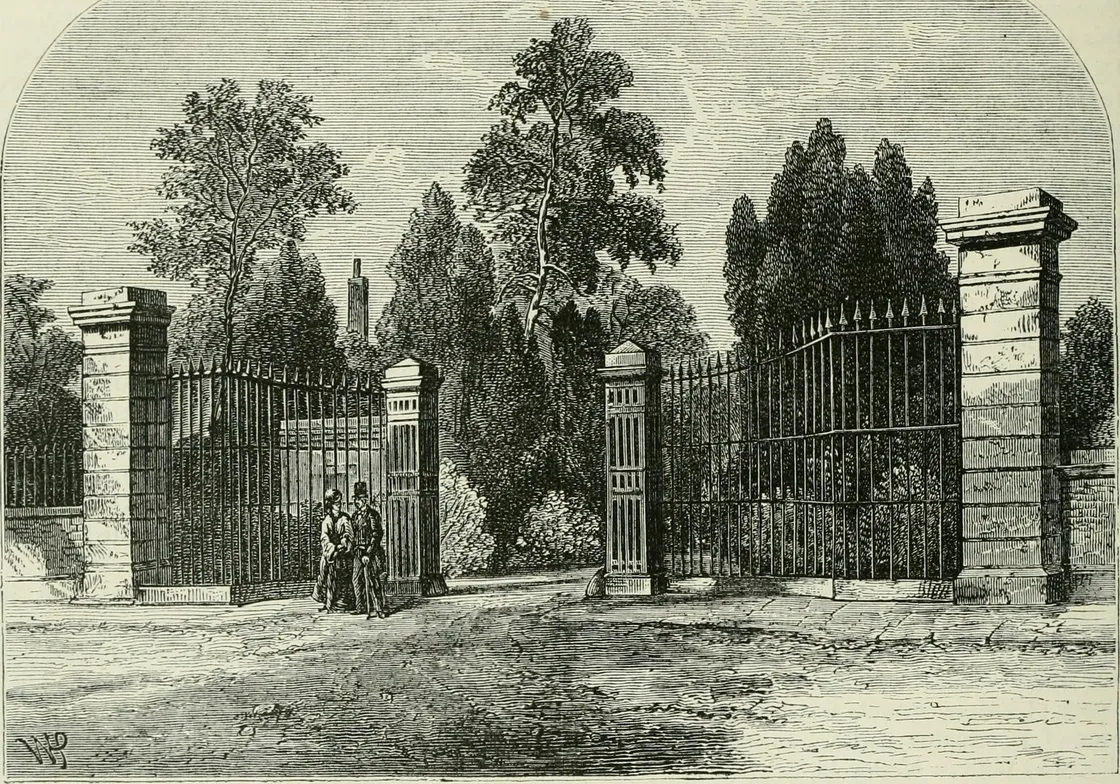
Entrance to Brompton Cemetery, 1873.
Only one of the chapels was built, the domed Anglican Chapel. The Great Circle was also smaller than planned. There was room for thousands of coffins in the catacombs, but only 500 spaces were purchased.
The owners were eventually forced to sell. Twelve years after it opened, Brompton Cemetery was taken over by the General Board of Health. It remains part of the Crown Estate and is now run by The Royal Parks.
Who’s buried at Brompton Cemetery?
Emmeline Pankhurst, the Suffragette, was buried in Brompton in 1928. She died just three weeks before women aged 21 and over were given the right to vote. On the day of her burial, the Manchester Guardian reported a “crowd of people… waiting by the open grave, which was lined with laurel, ivy, and privet and surrounded by a carpet of imitation grass”.
It’s also the final resting place of John Snow, the doctor who identified that cholera was spread by contaminated water, rather than through the air. His monument was paid for by friends and co-workers.
In 1892, Long Wolf, an Oglala Sioux chief from America, died in London. He’d been touring with Buffalo Bill Cody’s Wild West Show. Chief Long Wolf was laid to rest at Brompton. Over a hundred years later, his family had his remains returned to South Dakota. He now lies in a cemetery where other members of the Oglala Sioux tribe are buried.
Chelsea FC founder Gus Mears also chose to be buried at Brompton, next to the club’s home ground, Stamford Bridge.
Brompton today
Unlike other Magnificent Seven cemeteries, state-owned Brompton was never totally taken over by nature. But its peaceful atmosphere and many different plants and trees make it attractive to wildlife.
Its grounds are home to many birds, including robins, goldfinches and song thrushes. Visitors can also follow the Brompton Cemetery Spider Stroll to learn more about insect habitats.
In 2018, a restoration project brought the Grade II-listed Anglican Chapel back to its former glory. Accessibility was improved and a cafe was opened in the North Lodge. Profits go back to The Royal Parks.



